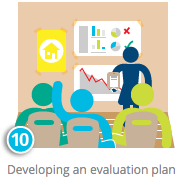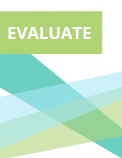“Why do we need more research and evaluation on housing and homelessness? We already have enough research and we know what to do to end homelessness.”
This is a familiar refrain from the general public, as well as some people who provide housing and support services for people who are homeless. Often times, research and evaluation are seen as a waste of money that would be better spent on housing and services.
As a researcher and evaluator of housing and support services for homeless people with mental illness, I believe that sentiments like those expressed in the quote above are misguided. Let me give you a few examples of how research and evaluation are useful.
 First, the Housing First approach, which grew out of the Pathways to Housing program in New York City, started out as an idea. The dominant approach to housing homeless people in New York was the residential continuum or staircase approach. The idea that homeless people should choose their own housing and that there should be no pre-conditions to obtain housing, like abstaining from drugs or alcohol or somehow to be “ready” for housing, flew in the face of existing practices. But Sam Tsemberis and his colleagues at Pathways knew that this idea needed to be empirically examined. So in a series of evaluations, they demonstrated that the Housing First approach actually showed better outcomes for homeless people than the staircase approach.
First, the Housing First approach, which grew out of the Pathways to Housing program in New York City, started out as an idea. The dominant approach to housing homeless people in New York was the residential continuum or staircase approach. The idea that homeless people should choose their own housing and that there should be no pre-conditions to obtain housing, like abstaining from drugs or alcohol or somehow to be “ready” for housing, flew in the face of existing practices. But Sam Tsemberis and his colleagues at Pathways knew that this idea needed to be empirically examined. So in a series of evaluations, they demonstrated that the Housing First approach actually showed better outcomes for homeless people than the staircase approach.
Second, Housing First programs are typically targeted at those who are chronically or episodically homeless. This population accounts for most of the use of shelter beds and other expensive services, as profiled in Malcolm Gladwell’s story of the Million Dollar Murray. But we did not know that there are sub-populations of homeless people until Dennis Culhane made this discovery through his research in Philadelphia and other cities. Now it is common place for people in the field to differentiate these sub-populations.
Third, as this module clearly shows, evaluation can lead to improvements in practice. Sam Tsemberis, Ana Stefancic, and colleagues have developed a Housing First fidelity measure that provides an evaluation of how closely a program adheres to the core elements of Housing First. Rather than being a test, a fidelity assessment can pinpoint areas of strength and areas that need improvement. This fidelity measure was used twice in the At Home/Chez Soi project, once during early implementation and then again a little later. At the second fidelity assessment, it was found that not only were initial strengths maintained, but that several areas that initially needed improvement actually improved over time. Staff members were able to benefit from and use the findings of the first assessment to make the programs even better.
Finally, evaluation provides data that can track progress towards the goal of ending chronic homelessness. The province of Alberta has incorporated Housing First as the centerpiece of its 10 Year Plan to End Homelessness. They have also put in place outcome indicators that track the homeless population in the cities of Calgary and Edmonton. These evaluation data show concrete progress toward the goal of reducing homelessness. Whereas homelessness was increasing over time in these two cities, it has now reversed directions and is dropping with the implementation of Housing First programs. These findings are not just important for government funders, but for those who provide services and for stakeholders in other provinces and countries who now look to Alberta as an exemplar of effective policy and practice, and as a source of inspiration.
Who needs more research and evaluation? The housing and homelessness sector does.
Why? Because it can determine the effectiveness of new and existing approaches; it can help us to better understand the people we serve; it can improve current practices; and it can document progress towards the goal of ending homelessness.


